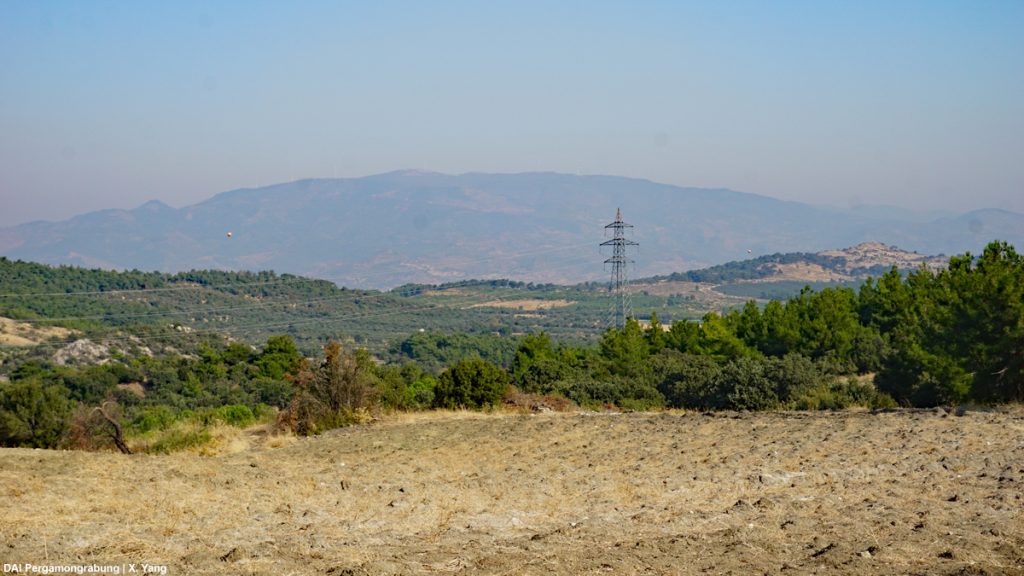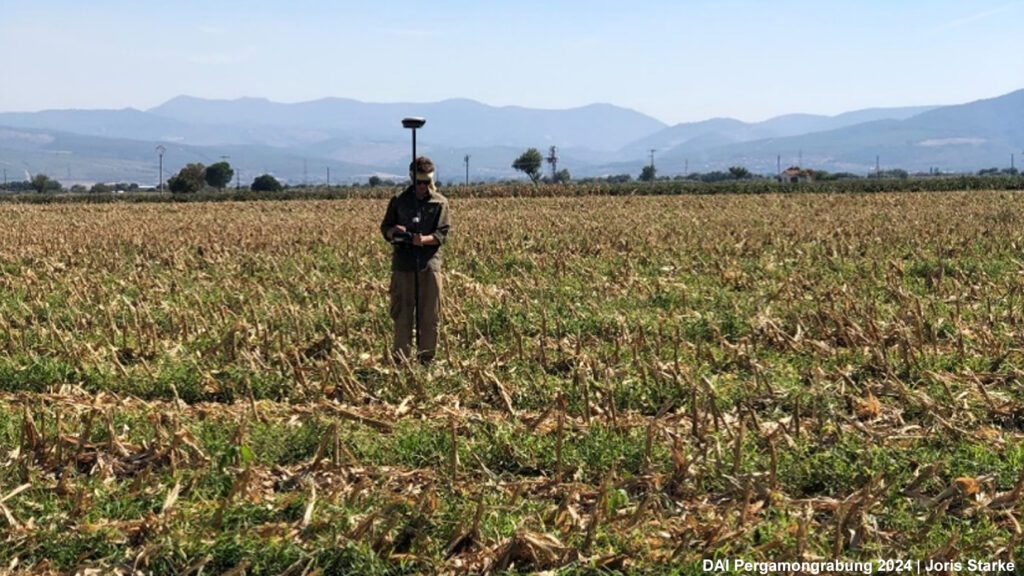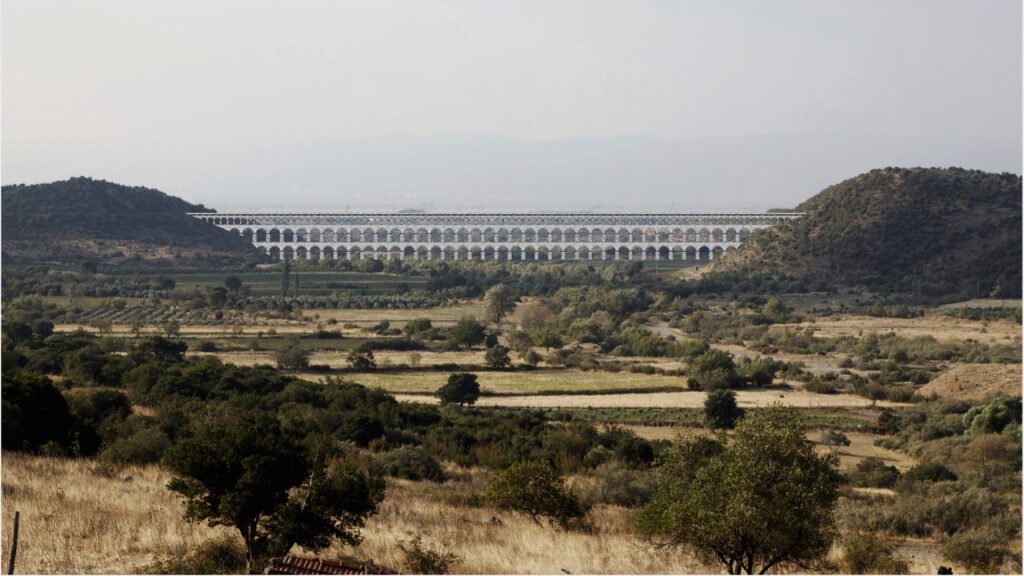Moritz Nykamp & Fabian Becker
Field work of the Physical Geography team of Freie Universität Berlin and Ege Üniversitesi İzmir in October 2022
In order to reconstruct and model resource availability and use in the “ceramic micro-region” of Pergamon extensive field inspections were undertaken in the catchments of the Kestel Çay and Bergama Çay rivers – well known in antiquity as Ketios and Selinus – and the pottery production sites of Bozköy and Sazlık were surveyed. Pottery samples from production sites and samples from adjacent clay deposits were taken to compare their compositions. Being transdisciplinary, soil and sediment samples taken by our colleagues from classical archaeology, the physical geography team conducted experimental archaeology by producing ceramics – even though under laboratory conditions: Standardized clay briquettes were produced from the sampled sediments and dried for subsequent analyses. We recorded the plasticity and shrinking of the clay bricks in order to better understand the suitability of the different clay resources. The colors of the bricks were recorded before we fired them in a muffle furnace applying a temperature ramp between 500 °C and 1100 °C. The chemical composition of the pottery pieces and clay bricks were analyzed with a portable X-ray fluorescence spectrometer prior to firing, after firing at 650 °C, and after firing at 1100 °C. The results will help to understand the patterns of clay resource exploitation during ancient times and their importance for the intensive pottery production in the Pergamon Micro-Region.
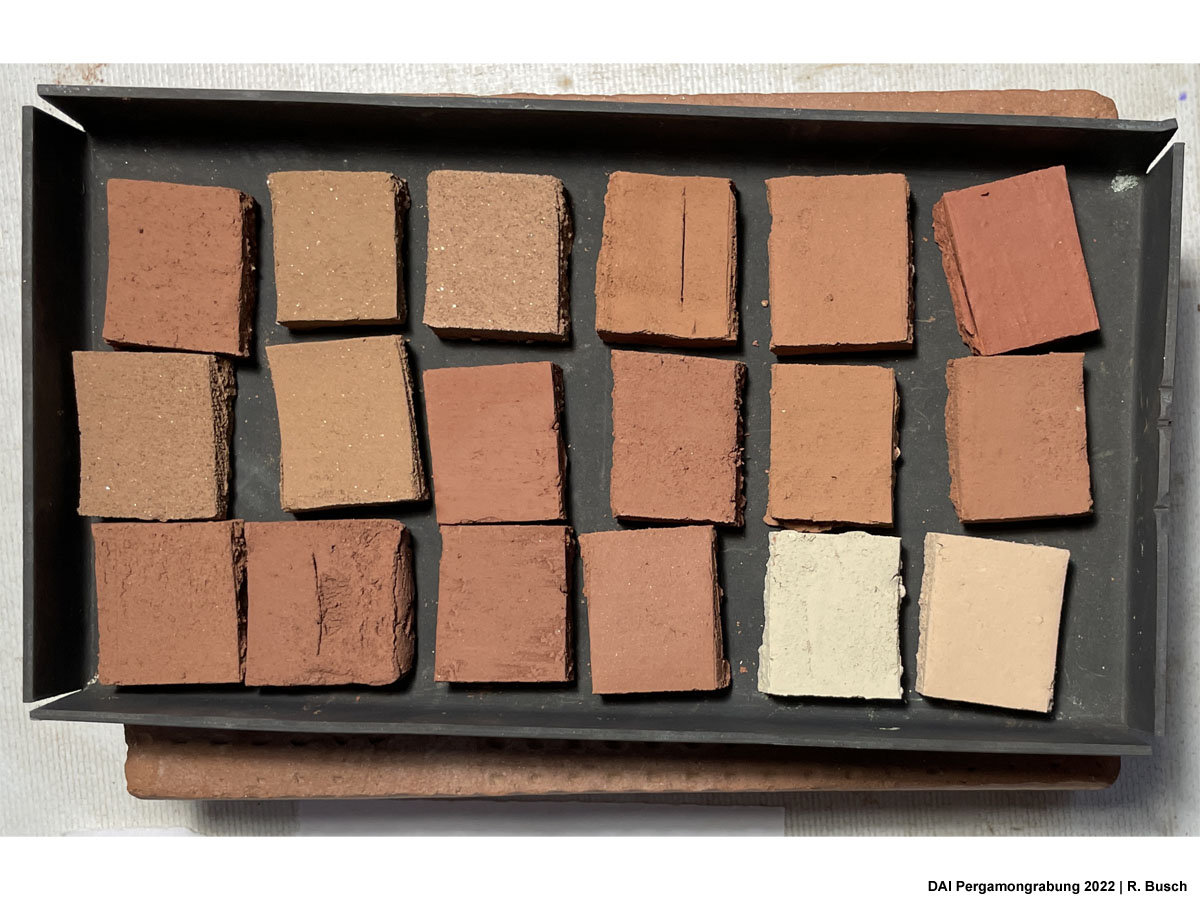
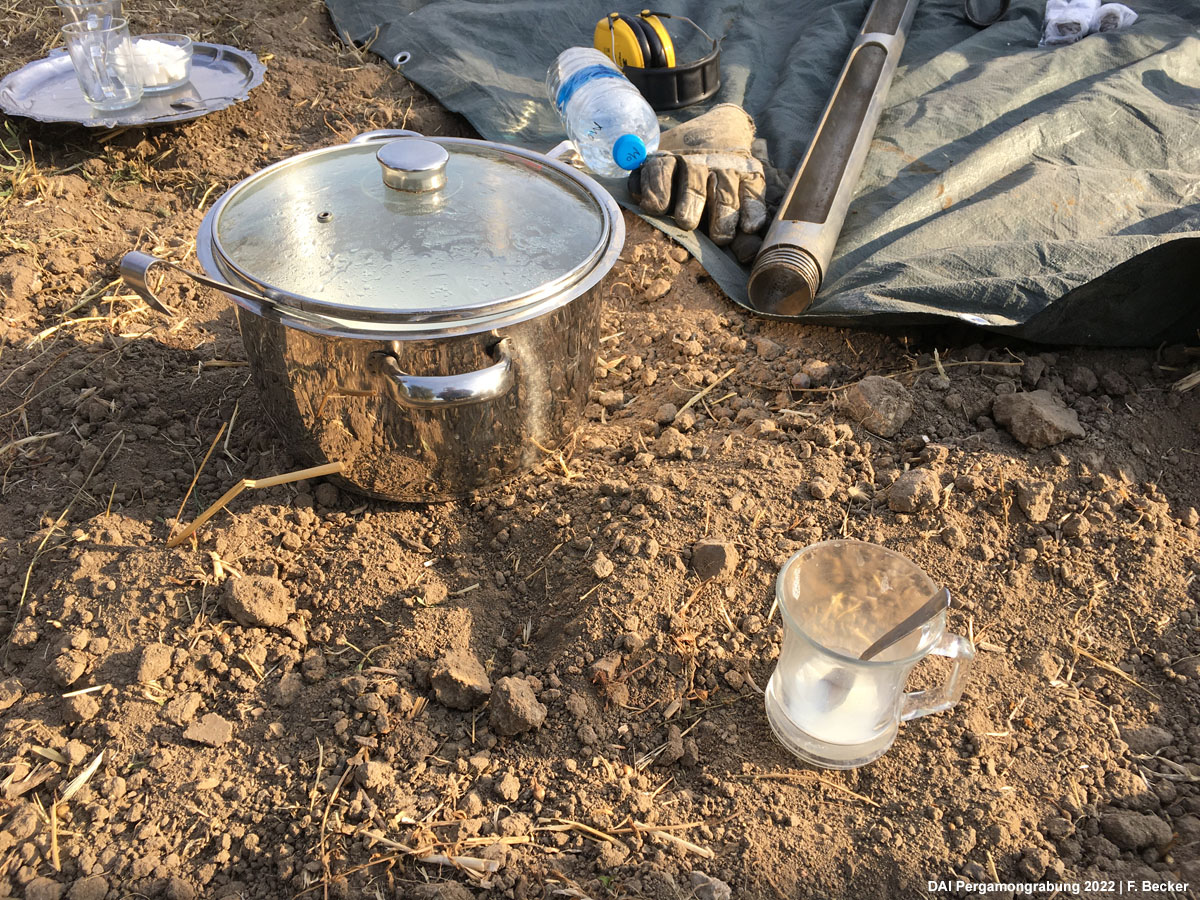
Fig. 2 (right) Pot with fresh milk served by a farmer during field work in Kumluca.
Besides clay resources, sediment profiles were also studied intensively. In addition to the 2020s’ recordings, sediment analyses and radiocarbon-dating of Bergama alluvial fan deposits, exposed in vast outcrops in a present-day gravel pit, the international physical geography team from Freie Universität Berlin and Ege Üniversitesi İzmir, continued to study the deposits of the Bergama alluvial fan in more detail. The sediments were obtained from the alluvial fan right below the ancient acropolis of Pergamon – downstream a highly active and dynamic urban center of ancient Asia Minor.
During the field campaign in October 2022 a total of 53 m of sediments were obtained by vibra coring techniques at six locations along a transect roughly running south-east from the outcrops we studied in 2020 towards the alluvial plain of the Bakırçay river. The lowermost core, beyond the toe of the Bergama alluvial fan, shows a sequence of 8 m of flood loam deposits with typical characteristics of Bakırçay sediments such as secondary precipitated carbonates forming pseudomycelia, abundant manganese concentrations, and fragments of terrestrial gastropod shells. The core at the fan toe shows Bakırçay sediments at the base, alternating layers of flood loam and alluvial fan sediments above, and sediments originating exclusively from the Bergama alluvial fan at the top. The sediments of the other four corings towards the proximal fan area are exclusively alluvial fan sediments that often show a chaotic fabric and generally become coarser towards the fan apex. Here, several event layers might give new insights in the stratigraphy of extreme flood events in the surroundings of Pergamon. Thus, the combined results from the two campaigns in 2020 and 2022 will allow to study the sediment dynamics of the Bergama alluvial fan in more detail and will yield new perspectives in the diachronic human-environment interactions in the direct hinterland of Pergamon.
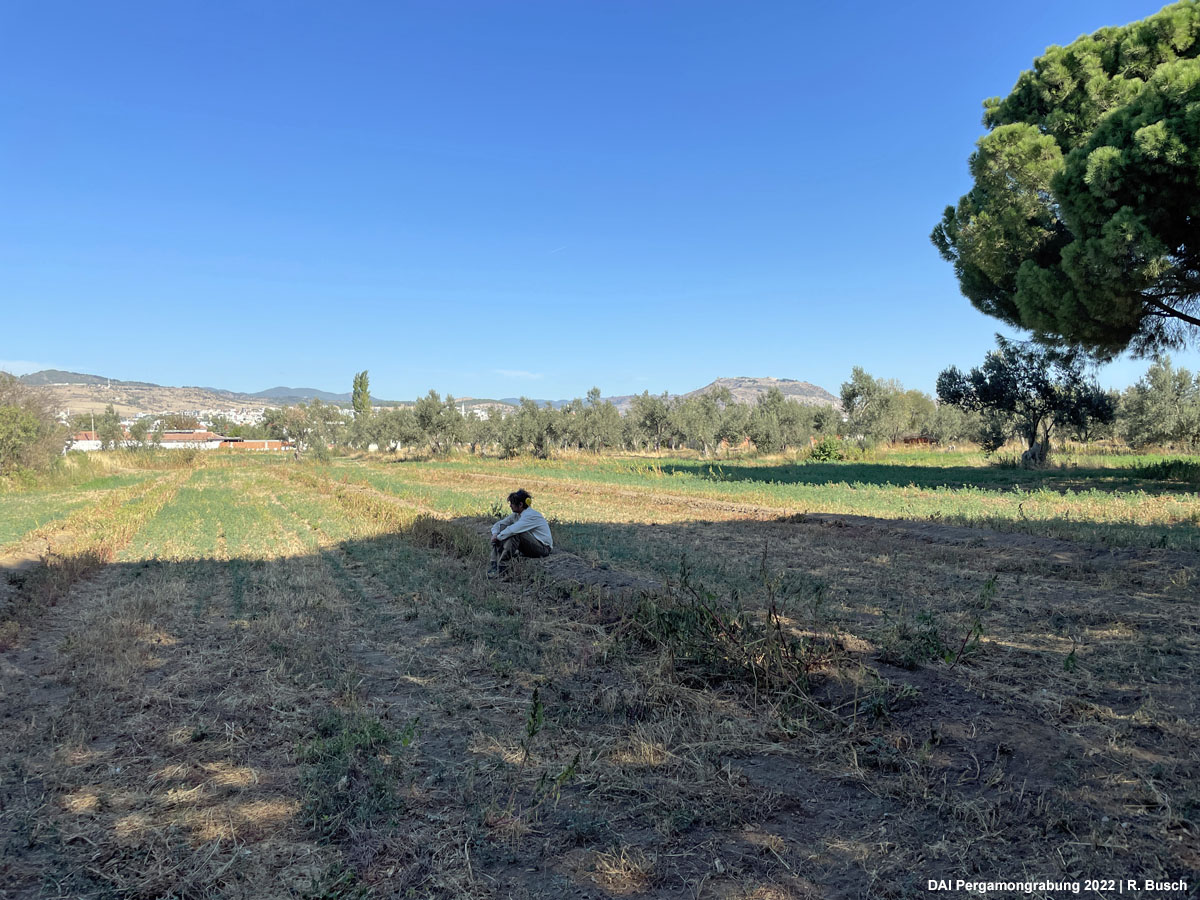
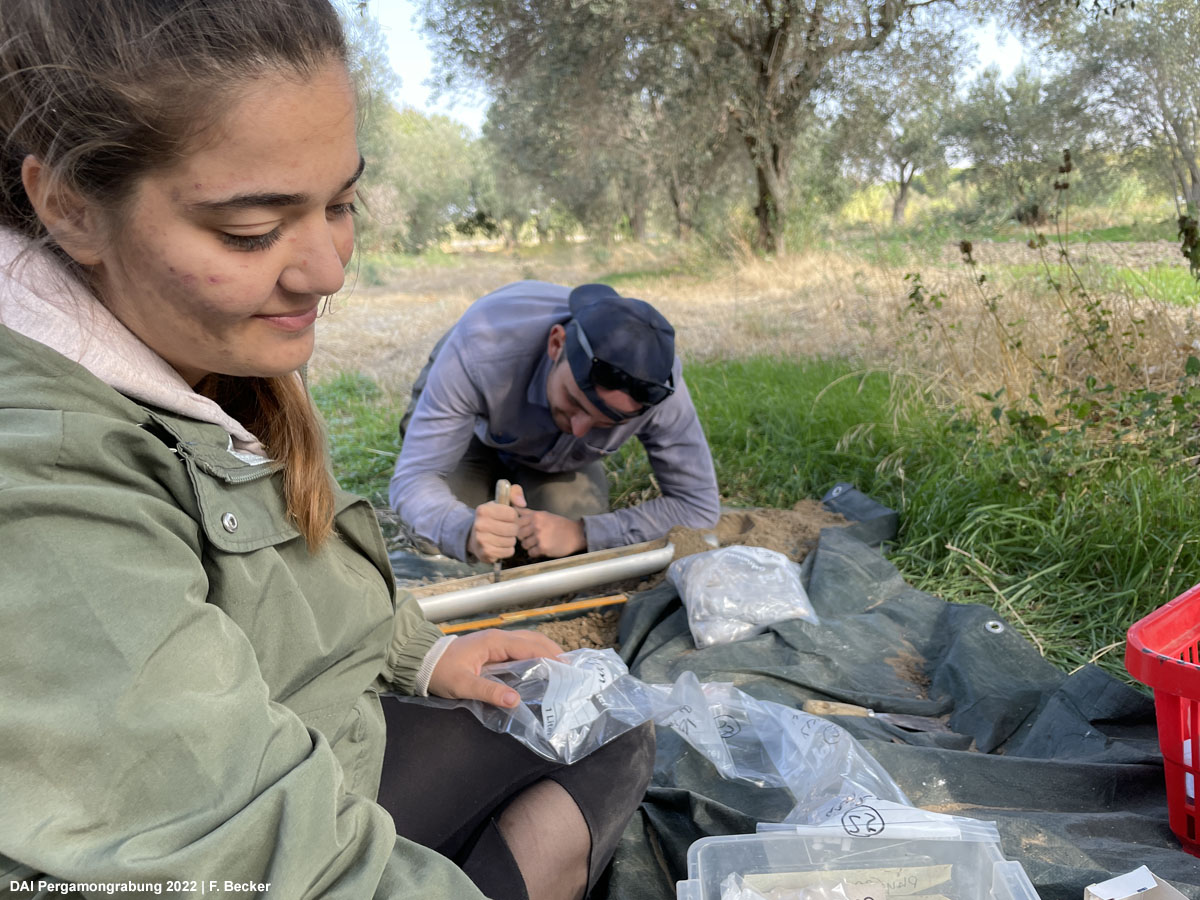
Fig. 4 (right) Core description and sampling.
With a second transect, roughly running south from Yığma Tepe tumulus, we recorded the deposits of a secondary alluvial fan originating from the Bergama alluvial fan. This aims to study human impacts on soil erosion and sediment redistribution beyond the built-up area of ancient Pergamon. Sediment cores (27 m in total) were taken at four different locations from the mid-fan area towards the flood plain of the Bakırçay river.
Just like in the last three years, we are looking back to a very exciting and successful field campaign in a keen and vibrant research team that allows fruitful transdisciplinary work among the international group members from German Archaeological Institute Istanbul, Ege Üniversitesi İzmir, and Freie Universität Berlin.
Team members: Fabian Becker, Annika Bigos, Yaren Bozoğlu, Robert Busch, Mehmet Doğan, Hakan Güler, Moritz Nykamp, Helena Weber, Xun Yang

